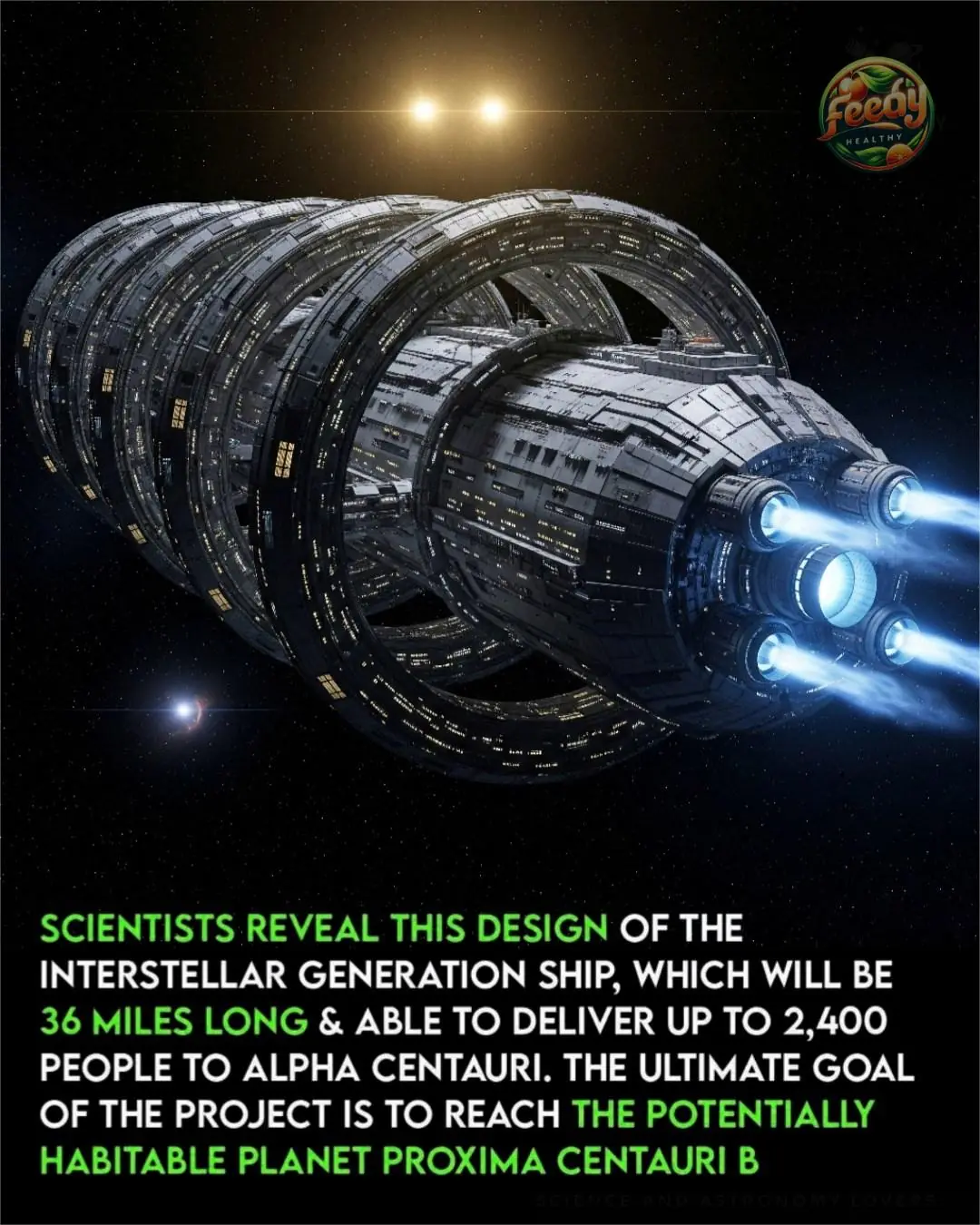In an ambitious leap toward life beyond Earth, scientists and engineers have unveiled Chrysalis, a proposed generation ship designed to carry thousands of humans on a centuries-long journey to Proxima Centauri b, a potentially habitable planet orbiting our closest star, 4.24 light-years away. The concept emerged from the Project Hyperion Design Competition, organized by the Initiative for Interstellar Studies (i4is), where it won first place for its innovative solutions to the immense challenges of interstellar travel.
A City in Space
Stretching an astonishing 36 miles (58 km) long, Chrysalis is envisioned as a massive cigar-shaped vessel with a layered “Russian doll” design. Its outer shells protect inhabitants from radiation, micrometeoroids, and extreme temperatures, while the inner layers contain living quarters, farms, freshwater lakes, and biodomes replicating Earth’s ecosystems.
The ship is designed to support 1,500–2,400 people, including specialists such as scientists, engineers, medical staff, educators, and agricultural workers. Rotating rings would generate artificial gravity, minimizing health risks from long-term weightlessness, while closed-loop life-support systems recycle air, water, and food. Onboard biomes—from tropical forests to farmland—would ensure both sustenance and psychological well-being.
Propulsion and Longevity
At the core of Chrysalis lies a direct fusion propulsion system, a theoretical technology that could provide both thrust and onboard energy. The voyage to Proxima Centauri b is estimated to take around 400 years, meaning multiple generations would live and die aboard the ship before reaching their destination. This makes Chrysalis not just an engineering marvel but a long-term social experiment, requiring AI-assisted governance, advanced education, and robust community structures to preserve knowledge, cultural identity, and cohesion across centuries.
Ethical and Social Challenges
Designers emphasize that the ship’s success depends on more than technology. Questions of ethics, psychology, and social planning are central: How can generations born in deep space stay motivated to complete a mission they will never personally witness? How can communities maintain stability, morale, and a sense of purpose over centuries?
To tackle these challenges, Chrysalis incorporates governance frameworks inspired by sociocracy, alongside AI-managed education and cultural continuity systems designed to nurture resilience, adaptability, and intergenerational cohesion.
Safety and Sustainability
Safety is a cornerstone of the design. Chrysalis features robotic maintenance units, modular compartments for flexible repairs, radiation shelters, and redundant shielding to protect against cosmic debris. By combining sustainability with redundancy, the ship functions as both a secure vessel and a self-sustaining ecosystem.
A Vision Beyond Earth
While the true habitability of Proxima Centauri b remains uncertain, its position in the star’s habitable zone makes it a prime candidate for interstellar colonization. Chrysalis offers a blueprint for humanity’s survival beyond the solar system, blending advanced engineering, ecological sustainability, and cultural foresight.
If realized, Chrysalis would become humanity’s first interstellar colony, redefining how civilization thinks about time, community, and destiny. More than just a spacecraft, it represents a cultural milestone, challenging humanity to plan not just for decades, but for centuries.


